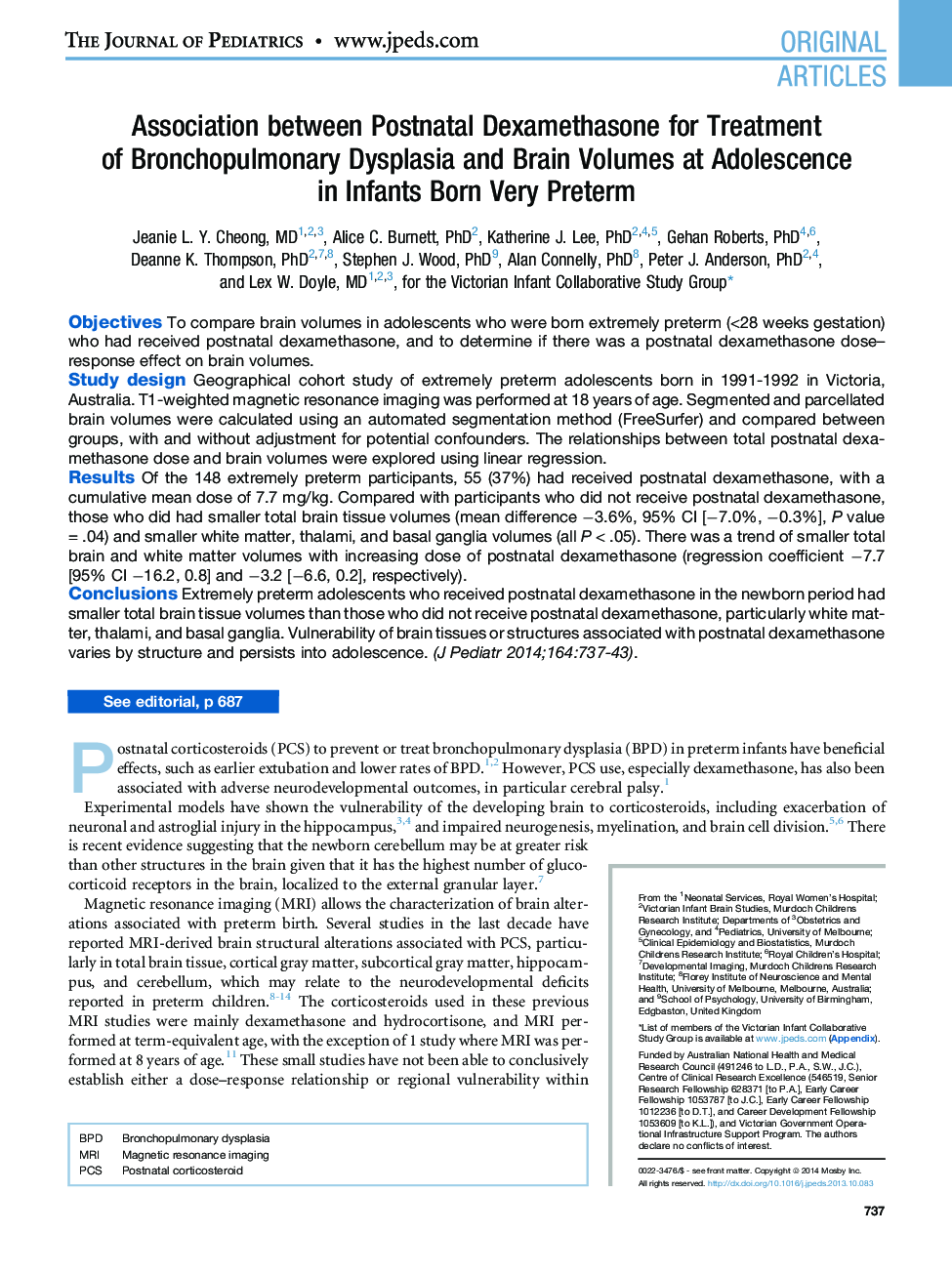| Article ID | Journal | Published Year | Pages | File Type |
|---|---|---|---|---|
| 6222478 | The Journal of Pediatrics | 2014 | 8 Pages |
ObjectivesTo compare brain volumes in adolescents who were born extremely preterm (<28 weeks gestation) who had received postnatal dexamethasone, and to determine if there was a postnatal dexamethasone dose-response effect on brain volumes.Study designGeographical cohort study of extremely preterm adolescents born in 1991-1992 in Victoria, Australia. T1-weighted magnetic resonance imaging was performed at 18 years of age. Segmented and parcellated brain volumes were calculated using an automated segmentation method (FreeSurfer) and compared between groups, with and without adjustment for potential confounders. The relationships between total postnatal dexamethasone dose and brain volumes were explored using linear regression.ResultsOf the 148 extremely preterm participants, 55 (37%) had received postnatal dexamethasone, with a cumulative mean dose of 7.7 mg/kg. Compared with participants who did not receive postnatal dexamethasone, those who did had smaller total brain tissue volumes (mean difference â3.6%, 95% CI [â7.0%, â0.3%], P value = .04) and smaller white matter, thalami, and basal ganglia volumes (all P < .05). There was a trend of smaller total brain and white matter volumes with increasing dose of postnatal dexamethasone (regression coefficient â7.7 [95% CI â16.2, 0.8] and â3.2 [â6.6, 0.2], respectively).ConclusionsExtremely preterm adolescents who received postnatal dexamethasone in the newborn period had smaller total brain tissue volumes than those who did not receive postnatal dexamethasone, particularly white matter, thalami, and basal ganglia. Vulnerability of brain tissues or structures associated with postnatal dexamethasone varies by structure and persists into adolescence.
